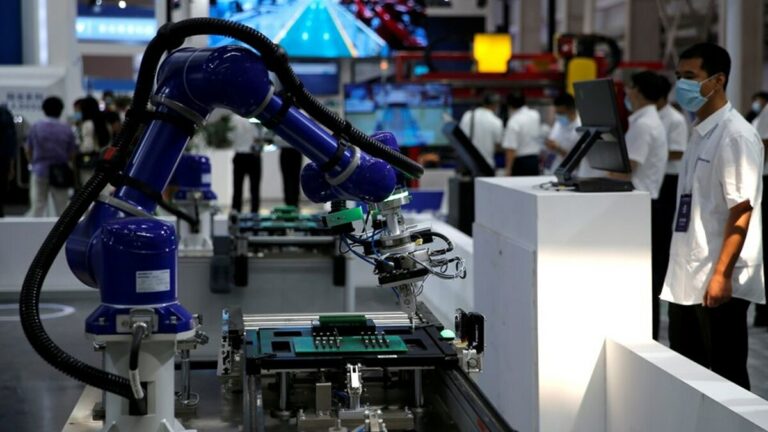Discrete Communications: How to Promote Business Development and Safety
How Confidential Staff Conversations Can Promote Gains in Safety and Business
No matter what industry you’re in, it’s nearly a guarantee that some parts of your company already utilize or could use onsite, private communications between staff and clients. When it comes to many enterprises, discrete communications are commonplace but not necessarily so discreet in the following areas:
• Client handoff between staff members • Complaint handling • On-site security systems • Emergency communications
Furthermore, it’s very likely that you can quickly name additional company sectors that make use of or could profit from discreet communications. There is no questioning the importance of these business sectors, although some of the specified elements are not necessarily clear from the headers above. So let’s look more closely at each of these areas.
Systems for Protection
The on-site security solutions, which have a long history of discrete communications, may be crucial depending on the circumstances. For instance, it would be useless for staff members to publicly disclose that someone is stealing corporate property because this would tip off the thief! Yet how frequently have you seen a business robbed while the security personnel are just using two-way radios to communicate? The radio implementation is frequently weak, allowing even actual consumers to hear ongoing communications, thus it is simply not the best option. A better choice would be to employ inconspicuous earpieces and microphones that allow for excellent communication even in busy areas without allowing others to listen in. Two-way communicators with security-specific keys, which enable users to converse with one another without being overheard, are recent options.
On-site paging systems are increasingly being combined with alarm systems to discreetly notify staff of security risks. Customers won’t need to worry about the impending security event because staff will be told of the issue but they won’t be aware of the security situation (nor will anybody else). If the issue progresses to a higher degree, consumers will be alerted. A unique transmitter with seven contacts that is appropriate for most security systems is one option. The device can deliver a completely covert message to the right persons regarding current security concerns. There are different ways to start a message, such as strategically placed press buttons that can start a number of messages for the staff.
Client Transfer between Employees
Have you ever noticed that in some firms, customers frequently move from specialists or workers who perform a single task to other employees? For instance, when a customer visits an optician in the UK for an eye exam, the receptionist welcomes them, they are seated in the waiting area, and when the optometrist is ready, they are shown to the test room and “given over” to the optometrist.
Many optometrists leave the examination room with the patient after the eye exam and essentially “give over” the patient to the salesperson so that they can choose frames and place an order.
But, a well-known optician decided that it would be better for the sales personnel to collect the customer rather than the optometrist leaving the exam room with them. However, how might this be done? The optometrist “calls” the sales team by sending the relevant message to a covert text pager using a service button that can send one of six messages from the test chamber. The call to the room is really “cancelled” by the first sales team member who arrives, allowing the others to carry on with their task.
The fact that both the “trusted optometrist” and the “less trusted sales workers” end up in the test room with the customer makes this approach ideal for opticians because it provides a perfect example of how to transfer customers in that sector. The corporation becomes more profitable as a result, and most crucially, customers are unaware that the mechanism is in existence, increasing the pace of closures.
You can probably think of a lot of company instances where something similar could be improved, just like this optician’s vast network of hundreds of locations was. All thanks to a stealthy staff pager system.
Other examples in the auto industry are service call buttons that alert sales managers to “hot” transactions with customers. A crucial point is that the customer is unaware that the sales representative summoned the sales manager to the meeting as a “closer” and that the manager then provides a “sweetener” like carpets or a “tank of gas” to seal the transaction right away. Only discrete messages would be able to accomplish that, and the paging platform is perfect for such uses.
Controlling complaints
In ANY business, there is nothing worse than consumers who complain to management while being observed by other customers. Let’s just say that a business’s desire for a pleasant customer experience and unhappy customers are irreconcilable. This kind of online sharing of bad experiences may be quite expensive for a firm, even in the short run.
Customers actually have very few choices for bringing their complaints to management’s notice and getting the problem resolved without “creating a scene” in front of other patrons. How recently did you use?
Restaurants (and other sectors) previously used a tip tray as a survey tool; however, an iPad has now taken its place. After the meal, the customer was requested to “complete the electronic questionnaire,” which was then placed on the tip tray. Crucial questions helped evaluate if a customer was satisfied or not. For instance, the last question the customer was asked was, “Would you suggest this product to a friend?” The management was discreetly notified that the patron at table X was dissatisfied if they said they would NOT suggest the restaurant to a friend.
The manager might then approach the client without being confrontational and inquire as to whether “everything was Alright.” He would then present the client with a discount coupon. Critically, the management had the chance to “turn the consumer around” so that they became satisfied and came back. When customers leave a business unhappy, the negative reviews that follow can be quite detrimental. Sadly, the survey solution provided has been abandoned for some time.
There are currently mobile applications that enable customers to complete a similarly designed “survey,” and if the customer is dissatisfied (by using similarly careful key questions in the survey), the manager will receive an SMS to his mobile phone. However, this solution is less “immediate” than the original on-site solution and could be slower at notifying the manager; and the customer could have already left the premises. Additional problems could include a lack of phone service at the location or a customer’s reluctance to download the app onto their smartphone (particularly important for consumers over 55, as just 25% of people do this).
Other options might be available, but they don’t seem to have gained any traction just yet. These remarks on how to handle customer complaints are certainly thought-provoking and offer at least some food for thought.
Important communications
For the purpose of saving lives, emergency resources must be accessible nearby. Emergency services must plan for things like staffing shortages, power outages, fires, floods, and other unfavorable situations that might affect their performance. Who knows what emergency teams may have to deal with given the sources of danger present in today’s world: terrorists, fire, personal injury, water, building collapse, detonation, or any of a hundred other possibilities. Don’t even think of using nerve agents! Are you prepared? Could your solutions really meet the demands of each and every one of these incredibly complicated emergencies?
Only a portion of the aforementioned may be applicable if you are in charge of a small business, school, or other location where individuals must be kept in settings that can control personal safety. Think about a worker who is hurt while going about their regular business. It has been consistently shown that providing quick aid is crucial for preserving lives. Solutions like emergency call switches that alert emergency crews have practically saved lives on several instances in the United Kingdom.
More than ever, consideration for schools during lockdowns is necessary. A lockdown could occur for a number of reasons, such as dangerous dogs on campus, threatening or dangerous people (even parents! ), a fire, or many other scenarios that colleges and universities frequently encounter. Academy Lockdown offers several solutions for closing a school or institution while keeping students safe. Office national de la sécurité contre le terrorisme (NaCTSO): A police organization called the National Counter Terrorism Security Office (NaCTSO) supports the “protect and prepare” parts of the government’s counterterrorism plan and maintains a website with advice.
Local councils also offer advice to most businesses regarding lockdown and threat avoidance. Normally, councils offer recommendations to support the creation of a sound, efficient procedure. Please seek advice on these issues from your local government.
The various communication alternatives, which are appropriate for practically any situation, can be summed up as follows:
* Two-way wireless radio * Pagers * Internet and technologies connected to the “internet of things”
There are many more uses for wireless two-way radios today than just radio communication. There are a variety of options, including radio to email and radio to telephone (landline or cell). The number of features that have recently become commonplace on digital radio equipment has exploded. Every transmission can also be encrypted, making it nearly hard for outsiders to decrypt it. Numerous features of wireless radios include alarm handling, tele-connect, nurse call, radio management, web interface, access control, and IG/GPS. Other features include vehicle monitoring, fleet management, remote monitoring, signage integration, live updates, power monitoring, social monitoring, valuables protection, temporary alarms, and lone worker protection.
The most secure wireless radio communication systems are those based on specialized technologies like TETRA or SEPURA. Although these solutions are often utilized by fire and emergency services (or even governments), they might also be used in bigger organizations due to their obvious advantages.
In many ways, pagers are considered “ancient technology,” which is true, but today’s technology is different. Things have advanced into the twenty-first century with the introduction of cloud-based communications, especially in terms of lockdown and security. While it is true that “a pager is a pager,” most pagers are only receivers; the ways by which a message could be conveyed to a pager are more crucial than the pager itself; the pager is the final link in the communication chain and only shows what is received, whether it is encrypted or not. For example, there is equipment that can monitor a “open or closed” connection; this product might be IoT-based. All parties involved may receive a straightforward encrypted pager message if the messaging was routed over the cloud and returned to other on-site equipment. The messaging’s utmost discretion is undoubtedly a benefit. There are literally too many system settings to fit within the parameters of this article.
But security, emergency monitoring, and lockdown have all seen tremendous advancements thanks to the internet and the “internet of things.” And systems with the necessary technology are in the lead, such as BLE Bluetooth Low Energy (Version 5 and later). The range of Bluetooth technology historically was rather constrained, and many Bluetooth-based gadgets are still in use today. BLE technologies with cloud-based infrastructure are an amazing cutting-edge business solution since they can now track assets, people, changes in a device’s status, humidity, water ingress, G forces, sound, vibration, position, orientation to horizontal or vertical, you name it. It is impossible to overestimate the significance of BLE, and there is little doubt that BLE technology will spread throughout every industry imaginable, including yours!
Those who are unfamiliar with the technologies at hand are regularly forced to make choices that necessitate thorough evaluation of the particular objectives to be met, the technology option to be used, and, of course, the financial limitations. Readers will hopefully learn about some of the possibilities available from this post.







